Tag Archives: North Pacific Fishery Management Council
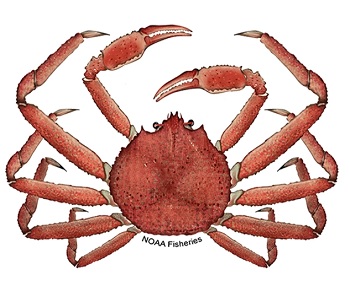
Did climate change really kill billions of snow crabs in Alaska?
In October 2022, the National Oceanic and Atmospheric Administration (NOAA) announced that the lucrative snow crab fishery in the Bering Sea would close for the first time, following a population decline of 80% between 2018 and 2022. While fisheries managers and biologists say climate change is to blame for the species’ retreat, some fishers and crab experts suggest that trawling bycatch and other fishing activity may have played a role in the snow crab’s decline. The fishery’s closure has amplified a chorus of concerns about Alaska’s trawling industry and the knowledge gaps around its potential impact on fisheries. The disappearance of billions snow crabs from the Bering Sea has captivated the world’s attention since Alaska shut down the fishery for the first time in October 2022. But where exactly did these snow crabs go? And what caused them to vanish so quickly? >click to read< 08:02
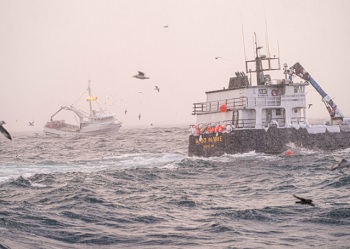
Massive losses predicted from Bering Sea crab closures
While other crab stocks have been declining in the North Pacific for years, the snow crab fishery’s collapse is doubly shocking for the industry. Not only is it one of the larger crab fisheries by volume in Alaska, it has also gone from booming and healthy to overfished and collapsing within five years, with little warning or clear explanation. Fishermen who made investments in permits and boats less than five years ago are now looking at bankruptcy. Alaska Bering Sea Crabbers, the trade organization representing the industry, has estimated the direct financial losses at about $500 million. Adding in the ripple effects to the economy, that estimate rises to about $1 billion. >click to read< 07:50

Bycatch task force considers new rules, more research to protect Alaska fish intercepted at sea
In the search for a solution to the problem of bycatch, the unintended at-sea harvest of non-target species, the stakes in Alaska are high. Now a special task force is nearing the end of a year-long process to find solutions that satisfy competing interests to the problem of bycatch, which refers to fish that are caught incidentally by commercial fishers who are targeting other fish. The Alaska Bycatch Review Task Force, created by Gov. Mike Dunleavy last November, is due to release its final report by the end of next month. At least two additional meetings are to be held between now and then. >click to read< 11:50
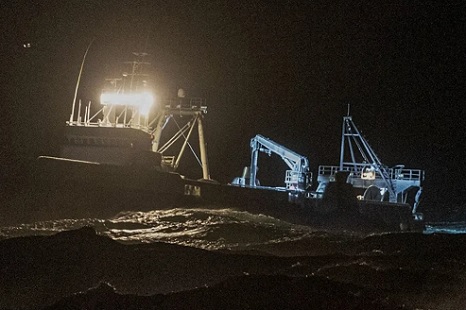
Conservation concerns cancel Alaska’s Bering snow, king crab seasons
Alaska officials have canceled the fall Bristol Bay red king crab harvest, and in a first-ever move, also scuttled the winter harvest of smaller snow crab. The move is a double whammy to a fleet from Alaska, Washington and Oregon pursuing Bering Sea crab in harvests that as recently as 2016 grossed $280 million. “I am struggling for words. This is so unbelievable that this is happening,” said Jamie Goen, executive director of the Alaska Bering Sea Crabbers. “We have third-generation fishermen who are going to go out of business.” >click to read< 14:47
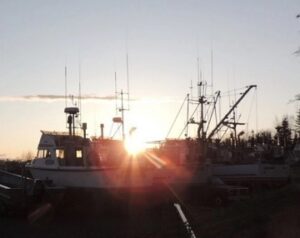
Feds working on new plan for contentious Cook Inlet fishery
Federal fisheries managers say they’ve started working on a new management plan for the Cook Inlet salmon fishery, months after a court said their plan to completely close the fishery was unjust. At a meeting in Anchorage Thursday, Jon Furland with NOAA Fisheries told the North Pacific Fishery Management Council that time is of the essence to create a new plan and comply with the court. In 2020, following a lawsuit from the United Cook Inlet Drift Association over management of the drift fishery, the council voted to close a large swath of Cook Inlet to commercial salmon fishing. The closure applied to Cook Inlet’s federal waters,,, >click to read< 16:48
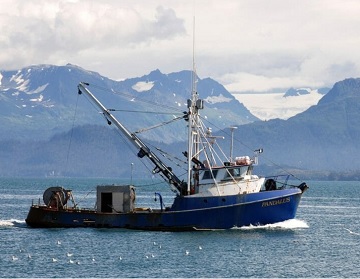
In victory for commercial fishermen, court orders Cook Inlet fishery to reopen
Cook Inlet drift fishermen can fish the federal waters of the inlet this summer after all. That’s after a district court judge shot down a federal rule that would have closed a large part of the inlet to commercial salmon fishing. Fishermen said it would have been a death knell for the fishery, which has 500 drift permit-holders. One of those permit-holders is Erik Huebsch, of Kasilof. He’s vice president of the United Cook Inlet Drift Association, which filed the suit. And he said he’s pleased. “Opening the EEZ is vital to the fleet,” Huebsch said. “Without opening the EEZ, the drift fishery is really not viable. That’s where we go to catch fish.” >click to read< 12:19
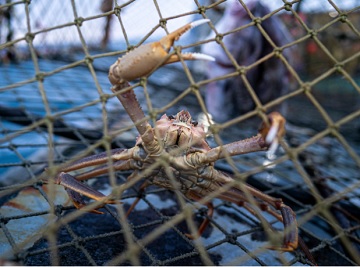
Scientists point to climate as likely cause for snow crab decline
Even as scientists are still trying to figure out why the Bering Sea snow crab stock crashed in 2021, federal managers are working on a plan to help rebuild it. Data from last year’s survey at this point seems to confirm that there was a massive decline in the number of young snow crab in the Eastern Bering Sea—something like 99% fewer female snow crab showed up in the survey from 2021. Jaime Goen, Alaska Bering Sea Crabbers, told the council that the crab industry is reeling from the revenue loss both in the snow crab fishery and the complete closure of the Bristol Bay red king crab fishery this year. What hurt was the suddenness — a few years ago, the crab stocks were looking hopeful and like a good investment, and many businesspeople and crew members bought in with the hopes those investments would pay off, she said. “Now those same people are facing bankruptcy,” >click to read< 22:00
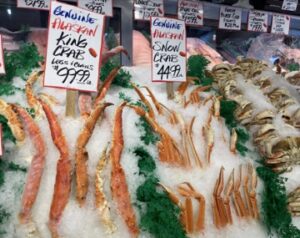
NPFMC wants more information on decline in king crab stocks
Two decades into the decline of Bristol Bay red king crab, with stocks now too low for a commercial fishery, the fight continues at the North Pacific Fishery Management Council over what protections to take for the crab in danger and how soon to do it. Alaska Bering Sea Crabbers had hoped that federal fisheries managers might put restrictions on groundfish fishing in the Red King Crab Savings Area, as well as other measures, during the NPFMC’s April meeting in Anchorage. Instead, the council voted to have staff prepare an expanded discussion paper for its October meeting that includes analysis of the impacts on annual or seasonal closures to pelagic trawl, groundfish, pot and longline gear in the BBRKA, including impacts on target catch, fishing timing relative to crab mating and molting, crab avoidance and other prohibited species catch and non-target species. >click to read< 11:27

NPFMC ponders changes in the halibut catch sharing plan
When the North Pacific Fishery Management Council adopted its halibut Catch Share Plan back 2014, charter operators were granted 125% of their historic catch at low levels of abundance, with that additional 25% coming out of quota for the commercial longline sector. Commercial longliners were assured that no further uncompensated reallocations would be considered, but now federal fisheries managers are doing just that. The Halibut Coalition is urging its membership of commercial harvesters to write to the governors of Alaska, Washington and Oregon expressing their views, as the representatives of those states on the NPFMC voted in favor of considering changes to halibut allocations. >click to read< 13:41
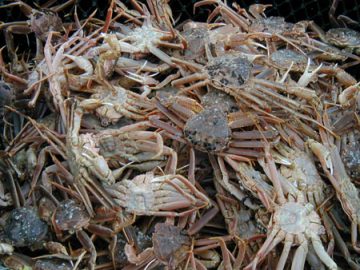
Bering Sea snow crab deemed ‘overfished’
After a sudden decline in the stock last year, federal managers have officially designated Bering Sea snow crab as overfished and are working on a plan to rebuild the stock. In October, the National Marine Fisheries Service determined that with its current low numbers, the stock of Bering Sea snow crab, also known as opilio crab, is officially overfished. However, the stock is “not subject to overfishing,” according to a report submitted to the North Pacific Fishery Management Council on the issue. That’s because the fishery removals aren’t above the level considered to be sustainable, rather it’s because the stock dropped for other reasons that scientists and managers aren’t entire sure of yet. >click to read<
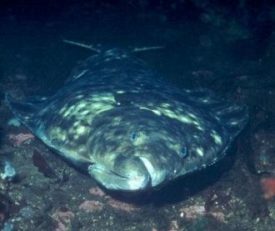
NPFMC ties limits on Bering Sea trawlers to halibut abundance
The council that manages fishing in federal waters voted to link groundfish trawl fishing in the Bering Sea and Aleutian Islands to halibut abundance today. The action caps, at least for now, a six-year debate about curbing halibut bycatch in Alaska. For many who have been following that debate, the decision comes as a surprise, since it’s expected to deal what trawlers say is a crushing blow to their fishery. >click to read< 09:10

Bering Sea fishermen press NPFMC on halibut bycatch
After years of deliberations, the North Pacific Fishery Management Council is inching toward a decision on whether to tie halibut bycatch limits in the Bering Sea to abundance indices. The action, known formally as Bering Sea-Aleutian Islands halibut abundance-based management, or ABM, is intended to reduce bycatch of halibut in the Bering Sea by the Amendment 80 trawl fleet when the fish stocks are lower. The Amendment 80 fleet is a group of catcher-processor vessels that are allocated a portion of groundfish harvest. Each year, the fleet is bound to a hard limit on how many halibut they can take as bycatch, known as the prohibited species catch, or PSC limit. >click to read< 08:34

Dunleavy administration announces formation of bycatch task force
“We’ve had a reduction in or closure of the crab fisheries in the Bering Sea. The [North Pacific Fishery Management] Council is discussing how to deal with halibut bycatch, and I think there’s a lot of perception that there are bycatch issues associated with what’s happened with salmon in Western Alaska systems,” said Alaska Fish & Game Commissioner Doug Vincent-Lang. And, he says, his boss has taken notice. “I think the governor was hearing loud and clear that there was just a lot of noise around the issue of bycatch,” >click to read< 12:52
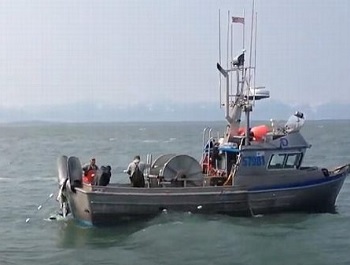
Commercial fishermen sue over Cook Inlet closure
Commercial fishermen are going to court in an attempt to keep Cook Inlet open to salmon fishing. That’s following a controversial decision by the feds to close a large swath of Upper Cook Inlet that’s long been managed by the state and is an important area for drift gillnet permit holders. The decision to close the federal Cook Inlet salmon fishery was approved by the feds last week but was first proposed last December by the North Pacific Fishery Management Council, which sets policy in Alaska’s federal waters. >click to read< 08:08

Cook Inlet Federal Waters Closed to Commercial Salmon Fishing
The Biden Administration has closed the federal waters of Alaska’s Cook Inlet to commercial salmon fishing for the 2022 Cook Inlet commercial salmon fishing season. This action closes a portion of the historically used fishing area for the Cook Inlet drift gillnet salmon fishery. NOAA Fisheries, the agency responsible for the stewardship of national marine resources, published the final rule in the Federal Register November 2, and it takes effect 30 days after that. >click to read< 13:51
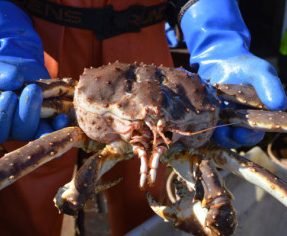
NPFMC wrestles with crab crisis – Disagreement in industry on expanding red king crab savings area
Commercial crab crews normally embarked on the Bristol Bay red king crab fishery are on the docks this October, with their fishery closed for lack of sufficient stocks, while federal fishery managers ponder how to restore the abundance required for the harvest to resume in coming seasons. During its October meeting, held virtually because of the ongoing pandemic, the North Pacific Fishery Management Council voted to request an analysis on likely impacts of expanding the red king crab savings area through emergency rule to shift the northern boundary from,,, >click to read< 08:15
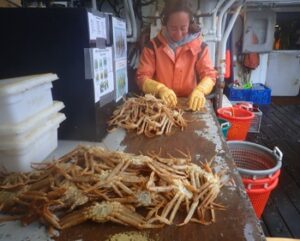
Faced with crashing crab stocks, council looks to swiftly analyze closures and trawl impacts
As crab fishermen face a dire season in Western Alaska this year, the North Pacific Fishery Management Council is looking for quick analysis and the fleet is looking for more extensive closures to protect some crab stocks. Survey data has shown an approximately 90% drop in snow crab stocks since the last survey, pushing acceptable catch limits down, while the long-term decline of Bristol Bay red king crab has led to a complete closure in the fishery for the first time since 1994. The Alaska Bering Sea Crabbers Association, the trade group that represents the majority of crab harvesters in the Bering Sea and Aleutian Islands rationalization program, has estimated a $200 million loss for the fishery. >click to read< 11:12
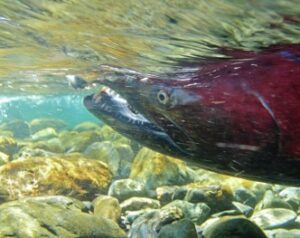
Trawler bycatch debate heats up after dismal 2021 returns
Chinook salmon returns were dismal virtually everywhere in Alaska this year, from Southeast to the Bering Sea, with few exceptions. That follows a trend, as abundance has declined over roughly the last decade. The North Pacific Fishery Management Council is debating changes in its meeting this month. Trawlers, which use weighted nets to drag either along the bottom or in midwater, are permitted a certain amount of bycatch as they fish for their target species, the largest of which is pollock. Bycatch is always a heated issue, but it is especially so now. >click to read< 07:10
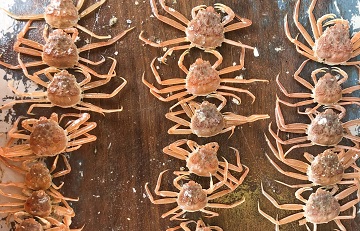
Alaska snow crab harvest slashed by nearly 90% after population crash in a warming Bering Sea
The snow crab is a mainstay of the Alaska crab boat fleet, much of it based in Washington, and the 2021-22 catch limit of 5.6 million pounds, announced Friday, is down 88% from the previous season. The 2021 fall harvest of Bristol Bay red king crab, another important source of revenue for that fleet, was canceled for this year because of too few females. The combined impacts of the closure and snow crab cutbacks are a big financial hit to crabbers who in past years have grossed more than $200 million from the two harvests. At a meeting of the North Pacific Fishery Management Council this week, crabbers called for additional restrictions in other harvests. >click to read< 09:30
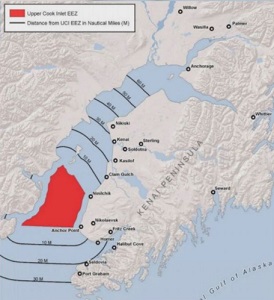
NPFMC decision puts Cook Inlet commercial salmon fishery in jeopardy
Final action by the North Pacific Fishery Management Council on commercial salmon fishing in Cook Inlet threatens to exclude drift gillnet harvesters from fishing in the inlet’s commercial waters at the start of the 2022 fishing season. In a near unanimous decision reached during the council’s virtual meeting on Monday, Dec. 7, the panel selected an alternative that would close off to the commercial fleet federal waters outside of three miles from shore, an area where most of the fleet get the bulk of its catch. >click to read< 16:43

Bush Caucus urges reduction in halibut bycatch caps
Five members of the Alaska Legislature’s Bush Caucus have asked Alaska Department of Fish and Game Commissioner Doug Vincent-Lang to advocate for a reduction of halibut bycatch caps during the virtual North Pacific Fishery Management Council now underway. “Millions of pounds of halibut are discarded as bycatch every year,”,,, The Bush caucus noted that halibut fishermen lose a portion of their annual allocation of halibut every year due to the currently high bycatch caps. >click to read< 08:27
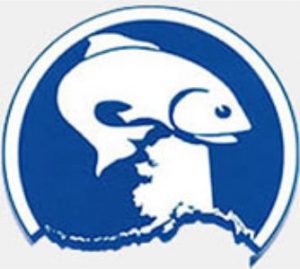
North Pacific Fishery Management Council meeting in Seattle, Jan. 27 thru Feb. 2, 2020
The North Pacific Fishery Management Council will meet at Renaissance Hotel in Seattle, Washington. . Read the Agenda >click here<, Read the schedule >click here< To listen online, >click here< while the meeting is in session. 12:01
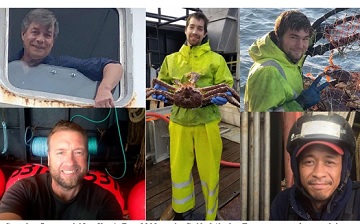
In Alaska, commercial fishing remains dangerous despite increased safety measures
Commercial fishing was once the most dangerous job in the country, (Scott Wilwert said, and during the 1970s and 1980s an increase in accidents and deaths ultimately led to the passage of the Commercial Fishing Industry Vessel Safety Act of 1988. The regulations required boats to have survival suits and life rafts and to carry out onboard safety drills, among other safety measures.,, “There was a time in the ’70s and ’80s where, I think, even the fishermen would tell you that there was a mentality, that ‘you have to go out but you don’t have to come back’ kind of thing,” Wilwert said. “That just doesn’t exist, nobody thinks that way anymore.” >click to read< 07:29

Stock decline leads to historic shutdown for Gulf P-cod
Gulf of Alaska Pacific cod fishermen will be keeping their gear dry this winter: The federal fishery has been closed for the 2020 season. The North Pacific Fishery Management Council decided to close the fishery due to concerns about historic low biomass shown in the latest stock assessment. The struggles of the stock have been linked to climate change more than excessive fishing. In 2014, the Gulf of Alaska experienced a major influx of warm water, linked to the El Nino event in the south Pacific. >click to read< 15:44
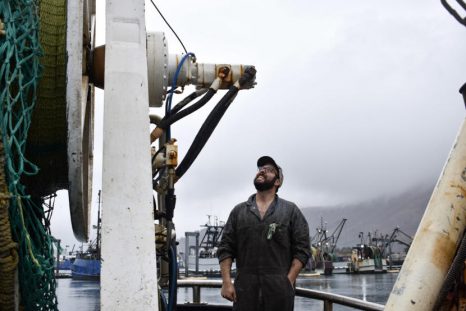
Increase in observer fees has people in the fishing industry questioning how their dollars are being spent
In Kodiak’s Dog Bay harbor Jake Everich is puttering around the galley of his trawler, the Alaskan. He bought his boat in March to fish for rockfish and pollock around the Gulf of Alaska. It’s just under 75 feet — a relatively small operation. Everich is among the fishermen affected by a recent decision from the North Pacific Fishery Management Council to increase observer fees from 1.25 to 1.65 percent of their catch value.,,, For Everich, the bigger issue is how that money is going to be used. He says the data observers collect, and sometimes observers themselves, can be unreliable. >click to read< 07:10
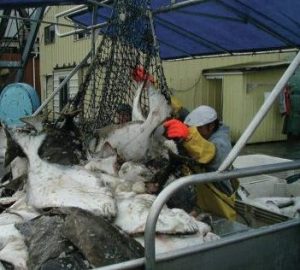
Halibut bycatch increases as council considers cod options
Data released preceding the International Pacific Halibut Commission’s upcoming interim meeting shows that almost all the regulatory areas of Alaska from Southeast to the Bering Sea — areas 2C through 4E, respectively — caught more halibut as bycatch in the 2019 season than they did in 2018, with the exception of area 4B, which covers the western Aleutian Islands. Coastwide, from California and British Columbia through the Bering Sea, bycatch increased by more than 1.5 million pounds,,, >click to read< 15:48

Observer fees will increase in GOA, BSAI
Fees will increase starting in 2021 for partial coverage observer programs of commercial fishing boats throughout the Gulf of Alaska and Bering Sea/Aleutian Islands. The boost from 1.25 percent of the ex-vessel value of the fish on board to 1.65 percent was approved during the North Pacific Fishery Management Council ‘s meeting its October meeting in Homer. >click to read< 21:03
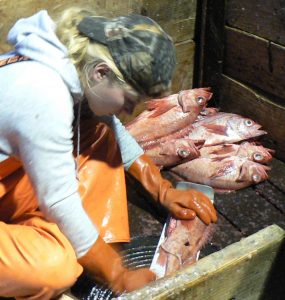
North Pacific council votes to hike observer fees in 2021
The costs for on-board fisheries observers will be increasing, and no one in the industry is particularly happy about it. The North Pacific Fishery Management Council voted to adjust the observer fee percentage to 1.65 percent of ex-vessel values. It was previously set at 1.25 percent. The increase is intended to cover additional observer services to reach the target coverage rate set out by the council for the various fisheries across the North Pacific region. >click to read< 14:15
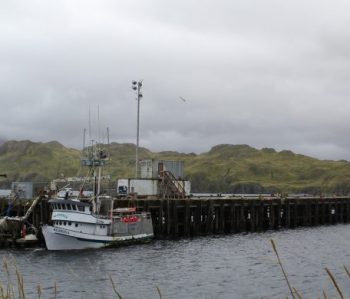
Amid a big fight for cod in the Bering Sea, can remote Adak survive?
A heap of slimy fish heads nearly filled a deep tote. Above, workers finished sorting stacks of decapitated halibut they had run through a grim mechanical apparatus. “Right here we have a guillotine blade,” said Mike Lauer, showing off the de-heading device. “We’ll sell the cheeks, and then we can use the heads for bait,” he added. Lauer is in charge of quality control for Golden Harvest, a processing plant on Adak that’s at the center of a fish war in the Bering Sea pitting two small Aleutian Island communities against large out of state fishing interests. And the implications of that fight could stretch to other coastal fishing towns in Alaska. >click to read< 21:08


































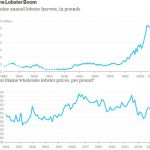
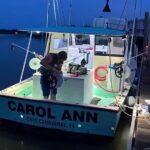





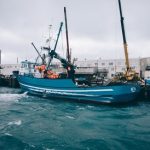

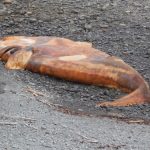
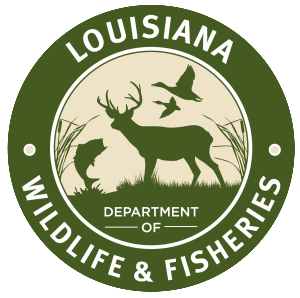
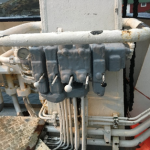
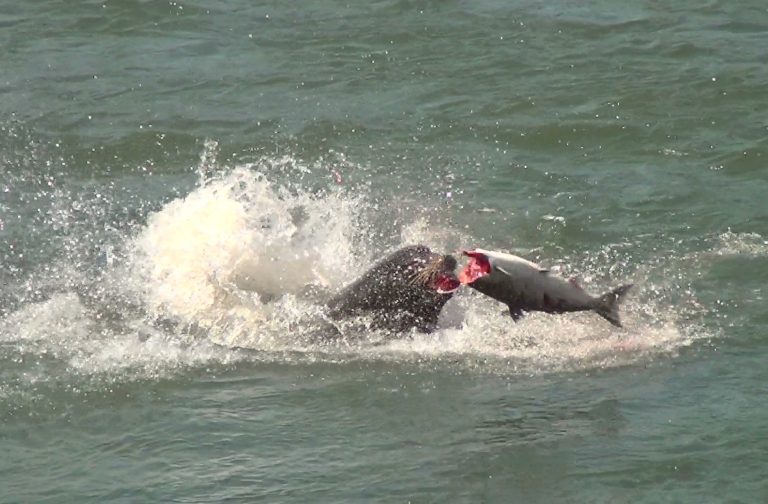



Council Comment Cancel Culture – NPFMC, citing profanity, tightens public comment policy
The North Pacific Fishery Management Council says recent profane comments had prompted the move. Some fishermen and community organizers say that’s a bunch of bull. For all the controversy and emotion that can accompany fisheries debates, the federal council that manages fisheries in the North Pacific says it hadn’t ever received public comments with explicit language, until last month.,, Linda Behnken, says she’s never seen the council move so quickly. “I mean, never seen them bring something up, take action, boom, done without more opportunity for meaningful engagement,” >click to read< 11:42
Share this post